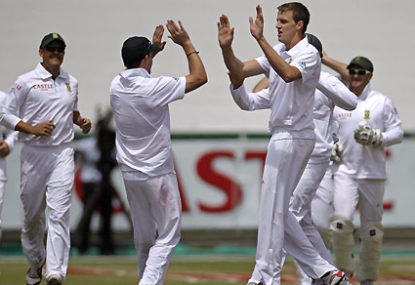Are India selecting themselves out of T20 World Cup glory?
Insanity is doing the same thing repeatedly and expecting different results. This quote is often attributed to Albert Einstein, but nobody knows if he…

With a lot of Test matches going on around the world, we hear a lot of talk about pitches. Some are deemed to be fast and bouncy, some rank turners and some so green that you can happily allow a herd of cows to graze on them.
The two dominant forms of pitches we find around the world are fast pitches and slow pitches.
When the difference between the speeds of the ball immediately after its release from the bowler’s hand and after it hits the pitch is more than 20 kmph, the pitch is regarded as slow.
This is usually checked for short or good length deliveries. If the difference turns out to be more than 25 kmph, then the pitch is dead as a dodo.
Traditional Indian pitches are a good example of slow pitches.
Fast pitches are defined as such if a bowler pitches the ball in the short length or on a little bit of the good length and the difference between the releasing speed of the ball and the speed at which the ball strikes the bat is less than 20kmph. These are also known as good pitches.
If the difference in the speed is 15kmph, then that pitch is a deadly fast pitch.
Pitches in Australia and England are generally regarded as fast.
On slow pitches, as the difference between the speeds is too high, it is easy for the batsman to score runs of the short length deliveries and it is tough for the bowlers to bowl shorter length deliveries effectively. This is why touring Australian and England pace bowlers always struggle bowling on subcontinent tracks.
Whereas on dead pitches, it’s totally a different ball game, as the ball won’t come the way the batsmen expect. The ball keeps low and it is very tough to time the ball. So to play well, one has to play it late after the ball has pitched. The bowlers generally tend to ball full balls rather than short.
On fast pitches, as the difference between the speeds is less, the bounce will be high and it will be tough for the batsmen to play the shots early in the innings. Generally most of the Australian pitches are fast and offer good consistent bounce, with The WACA pitch at Perth reckoned as the fastest in the world.
Most times almost every shot played on the pitch will be on the back foot. As the bounce on these pitches is good, batsman can play expecting the bounce and generally there will never be uneven bounce. So it may be difficult for a batsman to start the innings but once the batsman gets set, then he can start timing the ball well.
Generally the nature of the pitches depends on the soil and the climatic conditions of the place. The higher the clay content in the ground, higher the bounce the bowler gets. On all of the subcontinent tracks, the content of clay is very small, except a few pitches like Mohali, and so the bounce on the pitch is very low.
Also due to high temperatures, moisture content in the pitch reduces and as it gets hotter during the day, the pitch starts to tear. Cracks start appearing which the spinners usually exploit to get uneven ball and turn.
The pitches in Australia and England have high clay content, which is why their pitches won’t tear and form cracks and the ball bounces quite a bit. Even in Australia at places like Sydney and Melbourne, where the weather is generally hot, the clay content in the pitch helps to hold up the moisture and prevents the pitch from cracking up.
As a consequence, the batsmen tend to believe the bounce, as there is no uneven bounce and that is the reason why players when on the subcontinent, wickets tends to show the arms for the shorter or good length deliveries and get bowled due to the uneven bounce.
With all this knowledge of pitches, how does swing come in to play? Swing has nothing to do with the type of the pitches, as the swing of the ball is done in the air, rather than the pitch on the ground.
The conditions that assist swing bowling are the shine of the ball and the moisture content in the air. England pitches assist swing more due to the climatic conditions and, as the breeze keeps striking the ball, it won’t lose the shine early.
So in places where the weather is on the hotter side, bowlers struggle to extract movement after the ball loses its shine. But as the ball gets older, it starts swinging in the opposite way, which is called reverse swing.
The art of reverse swing isn’t an easy skill to acquire and it is most effective at speeds around 130kmph. Because of this, we see fast bowlers bowling with the old ball.